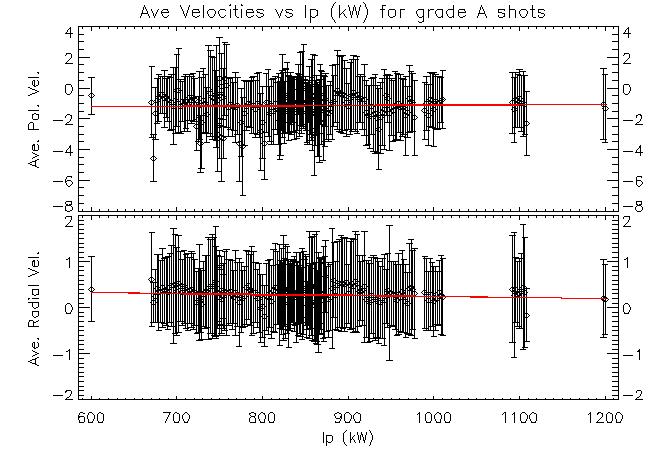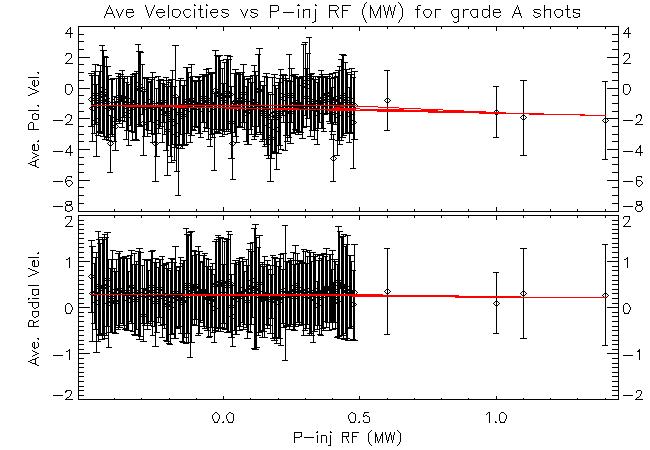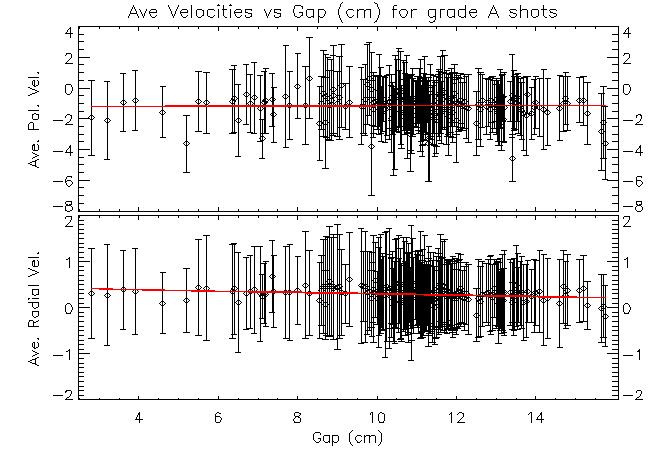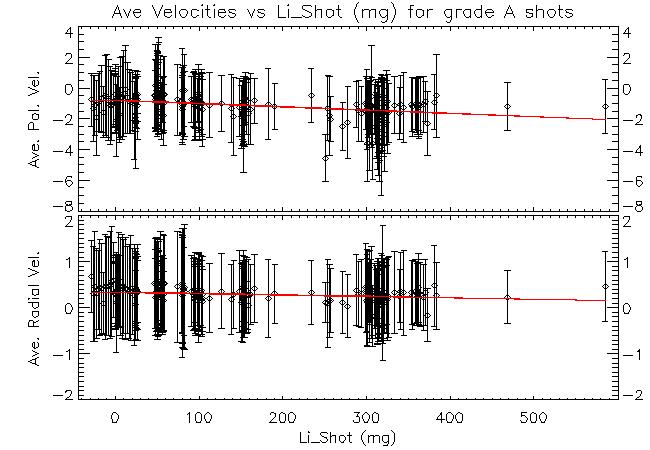
Note: Poloidal velocity goes up somewhat with increasing Bt
The 2010 shots with the fastest GPI data, shown on these web pages, have been given grades by Stewart Zweben. Grades A shots are those with good GPI data, a stable edge for several milliseconds around the time of the peak of GPI signal, and nothing else going on like a transition in injected power, ELMS, L-H or H-L transitions. A+ shots mean there were especially stable conditions around the GPI time.
The following plots are only for ~200 shots given grades of A or A+.

Note: Poloidal velocity goes up somewhat with increasing Bt

Note: Radial velocity goes down a bit with increasing Ip

Note: Not much change in velocities from increasing NB power, on
average. The Ohmic shots (no NB during GPI peak) have ~1 Km/sec
higher Poloidal Velocity and ~0.2-0.3 Km/sec
higher Radial Velocity.
(See note at the bottom about spreading out ordinate values.)

Note: There are not many shots with RF power injected (see
note at the bottom about spreading out ordinate values), but Average
poloidal velocity gets more negative at the larger powers.


Note: Radial velocity goes down with increasing Ne & Gap

Note: For Li_Today (total for day up to that shot) downward
velocity increases with Li_Today and
Radial velocity decreases with increasing Li_Today

Note: Li_shot (amount deposited right before shot) very similar
trend to Li_today
Note that in order to see error bars from the same ordinate, like 0 RF power or 0 Li before a shot, the values are spread out in X a bit (though for very many points, it looks misleading).
If you have questions or comments on this data or these analysis tools, please send email to szweben or bdavis.